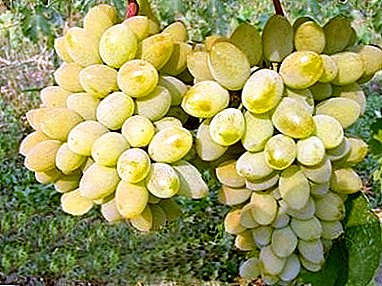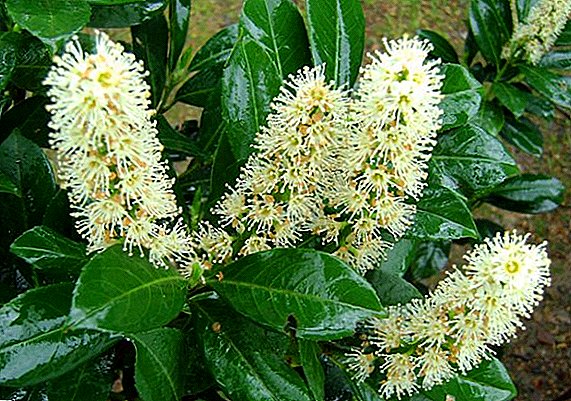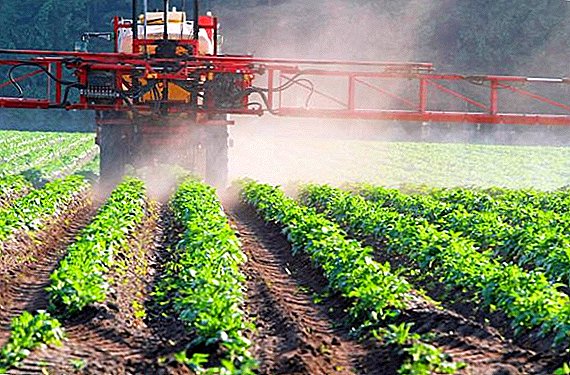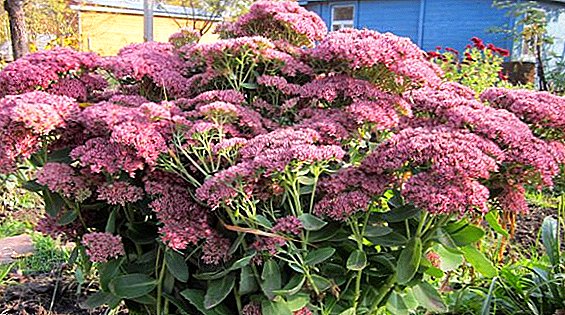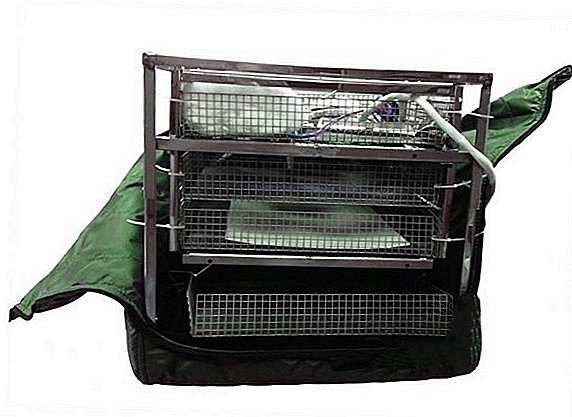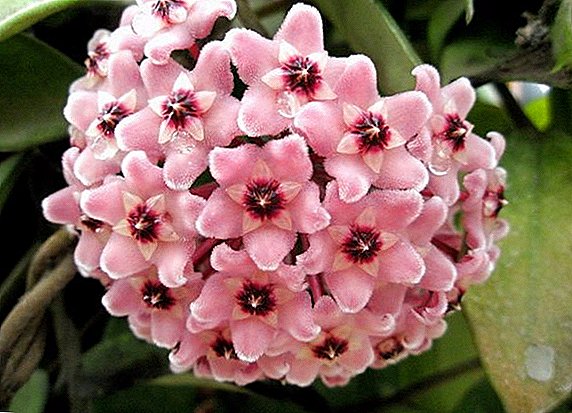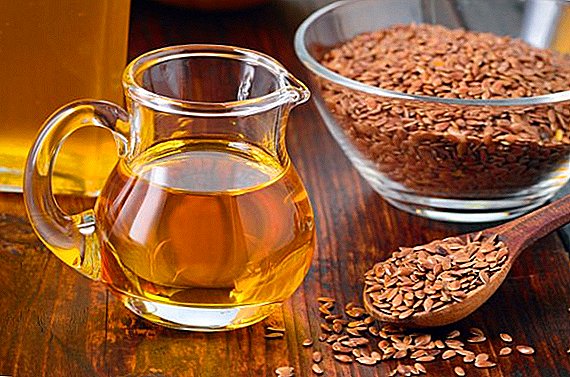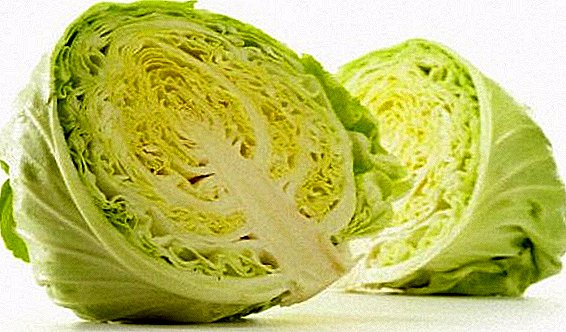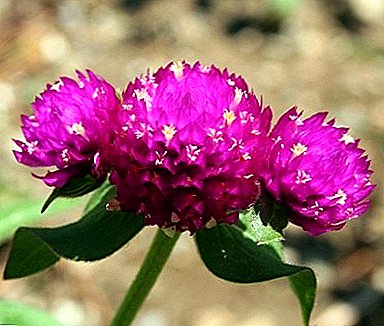
This modest, but charming flower with success will decorate both an interior of the house, and garden beds.
“Gomfrena” is an annual or perennial plant of the amaranth family.
It looks like a field clover and has inflorescences of various shades.
General description of the plant
"Gomfrena" has pot and garden forms. Dwarf varieties up to 20 cm tall are suitable for growing as a houseplant; they look more compact in pots.
They are mainly used to decorate balconies and terraces, as well as curbs in the garden.
In the flowerbeds grow larger bushy species, reaching a height of 60 cm. Stems that have almost no leaves, end with bright inflorescences, with which the entire bush is showered during flowering. Looks great in flower arrays and mixes.
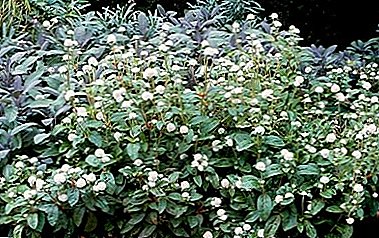 Spherical bracts may be orange, white, pink or purple.
Spherical bracts may be orange, white, pink or purple.
They give the plant decoration.
The flowers themselves are small and inconspicuous, they are almost not visible behind the scales of the bract.
"Gomfrena" is popular as dried flowers.
Flowers that are not fully bloomed are cut off and dried in a suspended form with their heads down.
The plant is unpretentious in care, breeds only seeds, has a long flowering period.
Popular views with photos
There are more than 90 species and varieties of "Gomphreni Spherical". In cultural breeding, they are somewhat smaller. On sale most often the following varieties.
"Gomfrena White"
A perennial plant that can grow carpet is more suitable for growing in the garden. The stems have small leaves, located against each other, and round inflorescences of white color.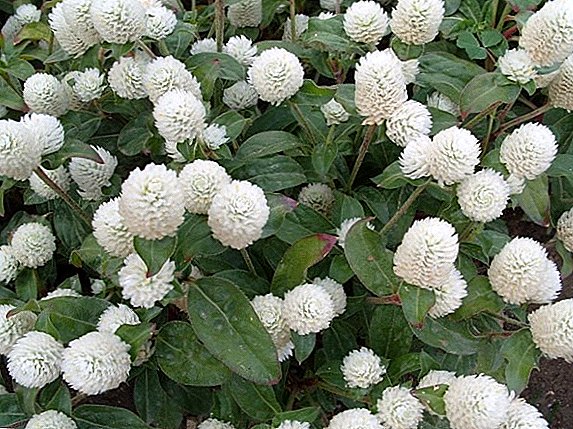
"Gomfrena Purple"
A small, well-growing bushy plant with a height of no more than 30 cm. During flowering, the bush is densely covered with small, ball-like, purple inflorescences. If it grows in a garden, the flowerbed becomes like a strawberry field.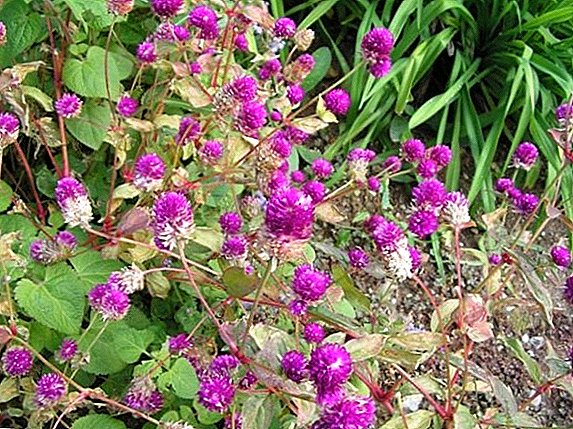
"Light Pink Gomphrena"
It grows in the form of heavily branched bushes up to 45 cm tall, the structure does not differ from gomfreny purpurea. Bracts have a light pink color. It can be used as a garden or pot form.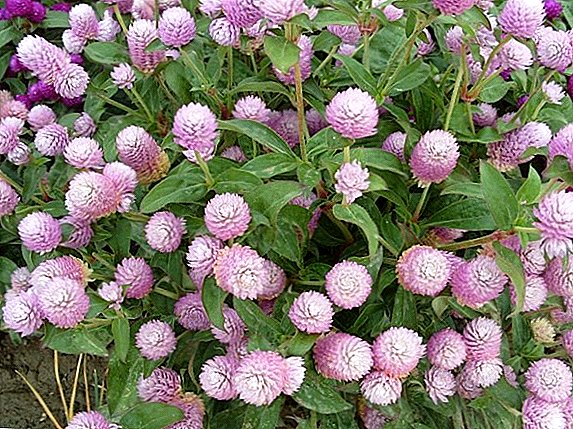
Care at home and in the garden
Flower "Gomfrena" does not require painstaking care. If it is properly maintained, it will bloom from early summer to late autumn.
Location and lighting
"Gomfrena" - light-loving planttherefore, it should be located in well-lit places in the apartment. In the garden it is better to land on the place where moisture does not stand. It should be well lit (there is a bright sun a few hours a day) and not blown.
Temperature
"Gomfrena" grows well in temperate climates, but only as an annual plant. She does not tolerate wintering. Dislikes wind and cold rainy weather. Indoors, it feels good at room temperature of 20-22 degrees.
Watering and moisture
Watering should be moderate, but the drying of the soil should not be allowed. It tolerates low humidity air in the apartment. Despite the fact that “Gomfrena” does not like windy places in the garden, it needs fresh air indoors, so it is recommended to ventilate it.
The soil
The plant prefers a slightly alkaline soil. It should be loose, permeable and preferably drained. You can add to the soil sand and peat.
Pruning
Pruning plants produced after flowering. All flowers are cut with stems for drying and further use for various compositions or just interior decoration.
Top dressing and fertilizer
The plant tolerates organic fertilizers well, but they should not be abused.otherwise “Gomfrena” may not bloom. It is best to mix them in a small amount into the soil before planting the seedlings. During the summer, it is fed with complex mineral fertilizers for flowering plants.
Landing
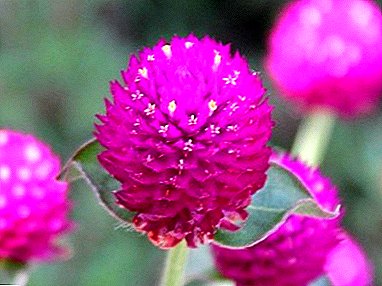 In flower shops, seeds are purchased, and seedlings are grown from them, which are then transplanted into a pot or garden bed.
In flower shops, seeds are purchased, and seedlings are grown from them, which are then transplanted into a pot or garden bed.
Growing from seed is practiced at the very beginning of spring.
The substrate consists of 2 parts of the earth for indoor plants and 1 part of sand.
The layer of soil is moistened with a sprayer, seeds are laid on it and sand is sprinkled on top.
All the time until germination, the container with the seedlings should be kept at a temperature not higher than +20 degrees.
The soil must be constantly wet, the place is shaded.
Seeds germinate in 12-14 days. They are given to get stronger and transplanted to a permanent place - in a pot or on a flower bed. The transfer to the flower beds is carried out after the end of spring frosts.
Before planting seedlings in a permanent place, it should be gradually accustomed to outdoor conditions. To do this, boxes of seedlings carried out during the day on the street, gradually increasing the time spent in the fresh air.
Important! To plant seedlings on a flower bed should be at a distance of 15 cm from each other.
Transplantation and reproduction
"Gomfrena Spherical" refers to fast-growing plants. In the middle lane are used annual species "Gomfreny", which are not transplanted. Usually, after flowering, they are cut into dried flowers, the rest is dug out and discarded. And in the spring they plant seeds for seedlings again.
If Gomfrena grows in a pot, she also does not need a transplant, she is well going through the winter at a sufficiently low temperature, the main thing is that it is positive.
Diseases and pests
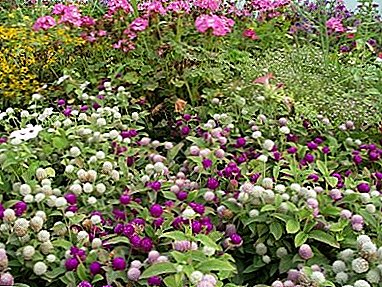 "Gomfrena" may be affected by fungal diseases.
"Gomfrena" may be affected by fungal diseases.
This occurs either when excessive watering, or if the "Gomfrena" grows in the hollow.
Sick plants are dug up and destroyed.
Of the pests "Gomfrena" may be affected by aphids.
At the initial stage of the lesion, it suffices to wash the plant with soapy water.
For more serious - need to be treated with insecticide.
Benefit
"Gomfrena" is used as a medicinal plant. It is believed that the infusion of its inflorescences helps with coughing, bronchitis and even tuberculosis, as well as a general tonic, especially after serious illnesses.
At the end of flowering "Gomfreny" on a bed, her life does not end there. The unfading charmer is a beautiful dried flower, which is widely used by decorators in creating paintings, flower arrangements and simple decorations for the interior using various natural materials. Very good winter bouquets with "Gomfrenoy."



